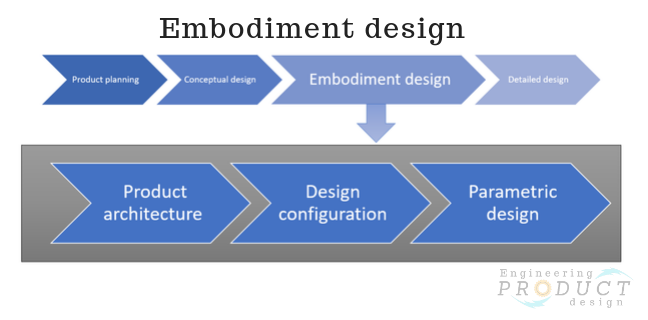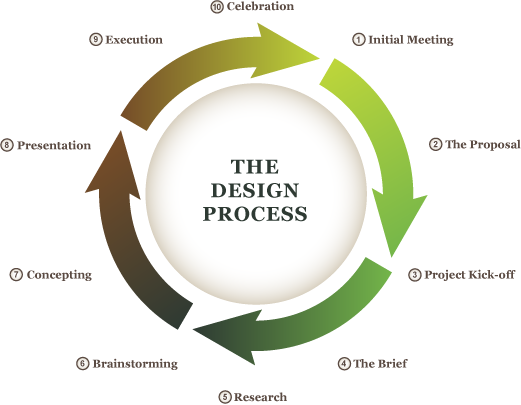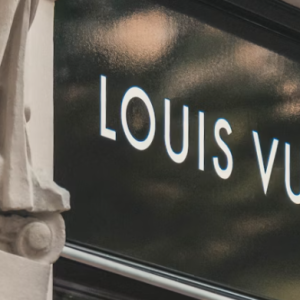When we see graphic design we understand how it appears and what it’s supposed to be, but understanding how it came from thin air is often a different story. The idea of designing an idea may sound a bit like nonsense when you first hear it, but the idea of visual communication isn’t as hard to understand as some think. Visual communication, which is graphic design, is the art of conveying a message through visual work. To create effective design, you need a strong idea at the core to start with.
The process of getting a design from the start where it’s nothing but an idea to a full-blown design is called conceptual design. Because this part of the process usually only happens inside your mind, it’s the part that people are most apt to pay the least amount of attention to. But without conceptual design, effective and high-quality design can’t exist. Conceptual design is the base foundation for any good design and a strong necessity.
If this is all sounding like complete nonsense to you, read on because we’ll narrow it down. We’ll talk about what conceptual design is and how you can apply it to your designs to get the best results for your clients!
An Introduction To Conceptual Design
Conceptual design is taking the starting idea for designs and making a solid plan for how you’ll carry out the idea into a strong design. View conceptual design as the framework for the actual design and how you’ll get it from an idea to a complete idea. Conceptual design is typically the part of the design process that occurs very early in the beginning stages of designing. This is where you won’t need anything besides a pencil and a sheet of paper to get the start of the design on paper.
When you think of conceptual design, view it as the plan for the design, and the execution is when you take your plan and turn it into a strong design. Think of someone viewing your design and thinking what the concept was. What’s the meaning behind the design? What’s the framework for the design? These are important questions to ask yourself before you start with designing. You don’t want to continue with adding color into your designs or take it to your drawing tablet before you’ve done conceptual design and know your foundation is for the design.
What Is The Purpose of Conceptional Design
When you think about the purpose of conceptual design, there’s a lot to unpack. Conceptual design is taking an idea, which is another more than a thought in your head, and bringing it into visual form. Although the idea itself may not always be the most practical, it’s important that you apply the laws of design when you’re creating graphic design.
Designs may look pretty, but their ultimate goal is to be used. Whether it’s website design or a logo, all designs are used for businesses for one purpose or another. They have to convey brand messages, show what a brand does and show the purpose of a brand to customers. This all has to be accomplished on top of looking appealing and fitting a specific style. Conceptual design is the start of understanding and planning for how this will all be accomplished.
On top of this, designers always have to remember that their artwork needs to be unique. Although to some extent all designs will be similar in how they look since there is no such thing as the truly original design, it’s never flattering to copy someone else’s work. Conceptual design is where you are most apt to be your most creative and create something unique.
How Can You Do It?
Now that we’ve got the basics of what conceptual design is, we can talk about the right approach for it and how you get it done. You should start with asking yourself why you’re creating this design and why it’s necessary. You should ask yourself what the goal of the design is and why you’re creating it. Once you understand why you’re creating the design, the next step is to focus on the research part of it.
This research step is very flexible, depending on what works for you and what you’re designing. It may involve gaining more insight into the brand that you’re working for and the brand’s personality. You’ll also want to get research on who the audience is that will be interacting with the design and seeing it. This may change how it’s designed since it’ll be made to appeal to a specific group.
Sometimes it can be helpful to take the thoughts that you have inside your head for the design and put them down on paper. When our ideas are running crazy in our minds, sometimes jotting down what we’re thinking on paper can help us make sense of them. Start with the main idea that you have and go with any other words that you’re thinking. The idea behind this is that the words will ultimately prompt ideas for your design.
The last step and the real reason for the conceptual design are when your thoughts finally leap from an idea to a visual representation. This is where it’s most important with sketching down everything that comes down, no matter what it may seem like. This idea is to brainstorm sketches and keep drawing until you find something that you think works for you. This is the important part where you’ll see if what you have inside your head actually looks as good as you anticipated.
The designers at Flocksy can create on-brand content- no matter the style.











